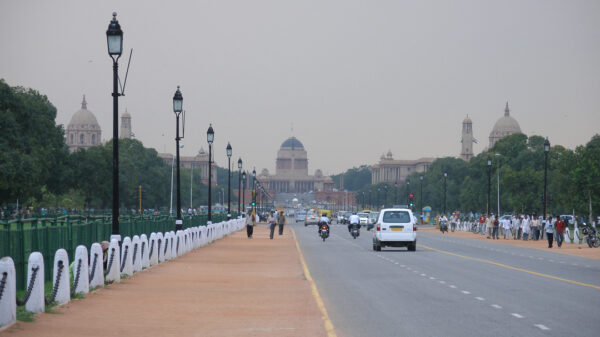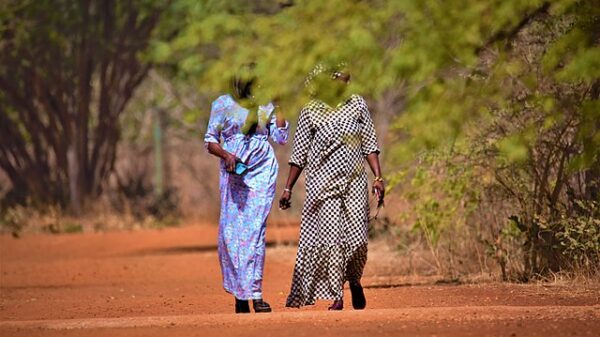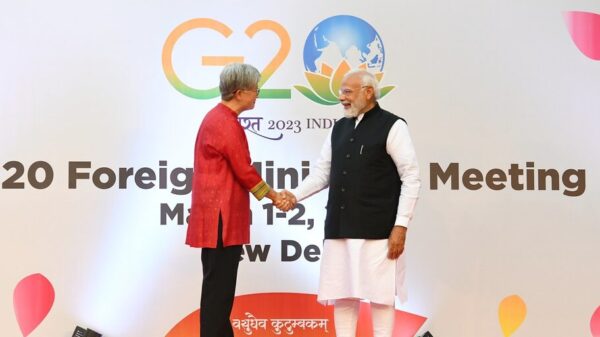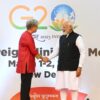Staff writer, Geeta Nandwani, argues that India’s name change represents a return to its true roots.
Is it time to redraw our maps with a red pen? It certainly may seem so after the G20 summit which saw Prime Minister, Narendra Modi, sit behind a name tag which read ‘Bharat’ instead of India. The state-issued invitations to the G20 summit also used the name ‘Bharat’, with President Murmu being referred to as the President of Bharat.
To say the least, a state deciding to change their name is rare and is sometimes associated with a patriotic sentiments. Indeed, the ruling Bharatiya Janata Party (BJP) is known to have a nationalist agenda, so many have speculated that this is behind the move. Others have thought that this name change has a partisan political agenda, since the acronym “I.N.D.I.A.” has been used to represent an alliance of over two dozen opposition parties.
जन गण मन अधिनायक जय हे, भारत भाग्य विधाता
— Dharmendra Pradhan (@dpradhanbjp) September 5, 2023
जय हो 🇮🇳#PresidentOfBharat pic.twitter.com/C4RmR0uGGS
However, the BJP have denied the prospect of using ‘Bharat’ in official documentation had any wider Hindu nationalist or political motives, stressing that the move purely involved distancing itself from its colonial past. The BJP have already acted in this vein, for instance, they renamed ‘Raj Path’, an iconic boulevard in Delhi, to ‘Kartavya Path’.
An examination of the term ‘India’
The term ‘India’ is an exonym (which is a given non-native name) imposed on the land during its prolonged history of colonialism. The name’s origins come from the Sindhu River which is the main water source of the northern river system in India and also provides protection. The Persians struggled to pronounce the ‘S’ in ‘Sindhu’, choosing to replace it with an ‘H’ for phonetic ease, leading to the common name ‘Hindu’. The word ‘Hindu’ was then interpreted by the Greeks as ‘Indu’ and later ‘India’ because the ‘H’ in Greek is silent. Despite this, localities continued to use Bharat as an endonym (a name which is natively used). It was only during British rule that the subcontinent was referred to as ‘India’ as its name officially. After Indian independence in 1947, the question of whether to replace India’s name was considered, but the writers of the constitution decided to state “India as Bharat, shall be the union of states” as a compromise to honour both names. However, ‘India’ became more frequently used to refer to the country internationally, with Bharat being used in Hindi and other native dialects.
Where did the name ‘Bharat’ come from?
It certainly wasn’t from a Bollywood film. India’s constitution refers to ‘Bharat’ alongside the name ‘India’, however the name dates back further. Nehru wrote that the term ‘Bharata’ was “derived from the mythical founders of the race” in his book, Discovery of India. In ancient Puranic literature (namely the Mahabharata) Indians are thought of as descendants of the King Bharata (a descendent of the Pandavas and Kauravas) who conquered and ruled India, which was named “Bharatavarsha’ (the land of Bharata). According to the legend, King Bharata was noteworthy because he ruled his empire democratically, employing meritocracy instead of the conventional rule of primogeniture when selecting his successor to the throne after deeming his own children unworthy. The Hindu literature presents him as having a strong devotion towards the people he ruled over.
The name ‘Bharata’ was also used in the Ramayana, one of the two most prominent Sanskrit epics of Hinduism. The epic centres around Prince Rama, who was sent into exile by his father (King Dasharata) to appease his wife Kekeyi in order to secure the throne for her own son, Bharata. Rama’s younger step-brother Bharata was disappointed by his mother, and stayed behind to rule the kingdom in the name of Rama, keeping peace and order until his return. In the epic, Bharata demonstrates that he is the embodiment of ‘dharma’ (translated as virtue or morality) and ‘idealism’ after he refuses to usurp the throne from his brother, demonstrating the importance of selflessness and loyalty. Bharata displayed his love for his brother by placing Rama’s sandals upon the throne in his absence to show the people of the kingdom his respect for Rama and the rule of law.
The name ‘Bharat’, therefore, has positive connotations and evokes qualities such as virtue, loyalty and fairness which the state understandably wishes to promote. In the Hindu religion, names are extremely significant. It is believed that your name can influence your character and the way in which you behave, which is why it is popular in Indian culture to name children after prominent Gods, Goddesses and pious figures.
An argument against the name change is that there will be a rise in the ‘right-wing vision of India as a Hindu nation’, because the name ‘Bharat’ is rooted in Hinduism. However, regardless of the origins of the name, ‘Bharat’ signifies qualities which are valued amongst all cultures and religions. Christians, Muslims, Sikhs and atheists can all agree to the importance of upholding morality, virtue and honesty. This speaks to the idea of Hinduism being a philosophy which has developed into a religion, using epics to illustrate good values which should be standard practise in life. Therefore, the BJP party should ensure that this name change is viewed as anti-colonial, as well as promoting good ethics and discourage Hindu nationalists from viewing this as promoting Hindu supremacy.
There has also been dispute over whether this name change is simply superfluous, having no real impact on the country itself. However by using Bharat, the original name of India, Mr. Modi is acknowledging the country’s ancient and established civilisation before foreign intervention as well as honouring culture and tradition which date back thousands of years.
In short, the name change from India to Bharat should provide the country with an identity free from colonialism and promote timeless positive values. Hopefully, all sides of the political spectrum will replicate these values when celebrating any change in name.


















